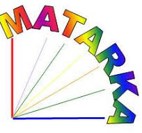Vadkár-okozók állománycsökkentésétől a növény-növényevő kapcsolatrendszerek többoldalú kezeléséig
Absztrakt
Hazánkban a patás vadfajaink szerepének megítélése az erdei életközösségek működésében alapvetően negatív. Az egyoldalú, a növény-növényevő kapcsolatrendszerek komplex ökológiai működését figyelmen kívül hagyó, jórészt gazdasági érdekek mentén kialakított uralkodó koncepció megnehezíti az ökológiai alapú eredményes természetvédelmi kezelések végrehajtását is. Erdei patásaink ökoszisztéma mérnök szerepet töltenek be az erdei életközösségekben, ahol szabályozó tevékenységük számtalan negatív és pozitív hatással nyilvánul meg. Nemzetközi példák azt mutatják, hogy a természetes folyamatokra alapozott erdőgazdálkodás mellett a sokfajú patásközösségek is „hasznos” részei lehetnek az erdőnek. Az univerzális megoldásként hangoztatott vadállomány-csökkentés hatása nagymértékben múlik az erdők természetességén, az élőhelyi és a tájléptékű mozaikosságon, a foltok relatív minőségén (pl. az optimális tápláléknövények elérhetőségén) és azok használatán is. Alapvetőnek tartjuk egy, a patások „túlszaporodását” és a vegetáció „túlhasználatát” előrejelző ökoszisztéma-szemléletű indikátor-rendszer alkalmazását a patások hatásaival kapcsolatos erdő- és vadgazdálkodási és természetvédelmi kezelések során.
Hivatkozások
Biró, Zs., Katona, K., Bleier, N., Lehoczki, R., Újváry, D., Szilágyi, Zs., Markolt, F. & Szemethy, L. (2012): A kőrösladányi vadaskert vaddisznó állományának hatása a védett növényekre. – Term. Közlem. 18: 67-76.
Bodor, L. (2014): Helyzetjelentés erdei vadkár ügyben. – Erdészeti Lapok, CXLIX(3): 76–78.
Burbaité, L. & Csányi, S. (2010): Red deer population and harvest changes in Europe. – Acta Zool. Lit. 20(4): 179–188.
Canham, C. D., McAninch, J. B. & Wood, D. M. (1994): Effects of the frequency, timing, and intensity of simulated browsing on growth and mortality of tree seedlings. – Can. J. Forest Res. 24(4): 817–825.
Chollet, S., Baltzinger, C., Ostermann, L., Saint-André, F. & Martin, J. L. (2013): Importance for forest plant communities of refuges protecting from deer browsing. – Forest Ecol. Manag. 289: 470–477.
Debeljak, M., Dzeroski, S., Jerina, K., Kobler, A. & Adamic, M. (2001): Habitat suitability modelling for red deer (Cervus elaphus L.) in South-central Slovenia with classification trees. – Ecol. Model. 138: 321–330.
Fagiani, S., Fipaldini, D., Santarelli, L., Burrascano, S., Del Vico, E., Giarrizzo, E., Mei, M., Taglianti, A. V., Boitani, L. & Mortelliti, A. (2014): Monitoring protocols for the evaluation of the impact of wild boar (Sus scrofa) rooting on plants and animals in forest ecosystems. – Hystrix 25(1): 31–38.
Fehér, Á. & Katona, K. (2013): Akácrágás: vadkár vagy vadhatás? – Erdészeti Lapok CXLVIII(9): 278–281.
Gerhardt, P., Arnold, J. M., Hackländer, K. & Hochbichler, E. (2013): Determinants of deer impact in European forests - A systematic literature analysis. – Forest Ecol. Manag. 310: 173–186.
Hilton, G. M., Packham, J. R. & Willis, A. J. (1987): Effects of experimental defoliation on a population of pedunculate oak (Quercus robur L.). – New Phytol. 107(3): 603–612.
Hjältén, J., Danell, K., Ericson, L. (1993): Effects of simulated herbivory and intraspecific competition on the compensatory ability of birches. – Ecology, 74(4): 1136–1142.
Jaroszewicz, B., Piroznikow, E. & Sondej, I. (2013): Endozoochory by the guild of ungulates in Europe’s primeval forest. – Forest Ecol. Manag. 305: 21–28.
Katona, K., Bleier, N., Hejel, P., Fehér, Á. & Szemethy, L. (2013a): Terepi módszertani segédlet a vadonélő patás fajok erdei élőhelyeken megfigyelhető hatásainak méréséhez. – Patamat Bt., Vértessomló, 14 pp.
Katona, K., Fehér, Á., Bleier, N., Hejel, P. & Szemethy, L. (2015): Patások erdei élőhelyeken tapasztalható hatásainak felmérése: a vadhatás monitoring. – Vadbiológia 17: 1–7.
Katona, K., Kiss, M., Bleier, N., Székely, J., Nyeste, M., Kovács, V., Terhes, A., Fodor, Á., Olajos, T., Rasztovits, E. & Szemethy, L. (2013b): Ungulate browsing shapes climate change impacts on forest biodiversity in Hungary. – Biodivers. Conserv. 22(5): 1167–1180.
Kuijper, D. P. J. (2011): Lack of natural control mechanisms increases wildlife–forestry conflict in managed temperate European forest systems. – Eur. J. Forest Res. 130: 895–909.
Kuijper, D. P. J., de Kleine, C., Churski, M., van Hooft, P., Bubnicki, J. & Jedrzejewska, B. (2013): Landscape of fear in Europe: wolves affect spatial patterns of ungulate browsing in Białowieza Primeval Forest, Poland. – Ecography 36: 001–013.
Kullberg, Y. & Welander, N. T. (2003): Effects of simulated winter browsing and drought on growth of Quercus robur L. seedlings during establishment. – Forest Ecol. Manag. 173: 125–133.
Lessard, J. P., Reynolds, W. N., Bunn, W. A., Genung, M. A., Cregger, M. A., Felker-Quinn, E., Barrios-Garcia, M. N., Stevenson, M. L., Lawton, R. M., Brown, C. B., Patrick, M., Rock, J. H., Jenkins, M. A., Bailey, J. K. & Schweitzer, J. A. (2012): Equivalence in the strength of deer herbivory on above and below ground communities. – Basic Appl. Ecol. 13: 59–66.
Muñoz, A., Bonal, R. & Díaz, M. (2009): Ungulates, rodents, shrubs: interactions in a diverse Mediterranean ecosystem. – Basic Appl. Ecol. 13(10): 151–160.
Mysterud, A. (2006): The concept of overgrazing and its role in management of large herbivores. – Wildl. Biol. 12(2): 129–141.
Nagy, I. (2010): Az utolsó órában. – Erdészeti Lapok CXLV(3): 82–84.
Newman, M., Mitchell, F. J. G. & Kelly, D. L. (2014): Exclusion of large herbivores: long-term changes within the plant community. – Forest Ecol. Manag. 321: 136–144.
Nopp-Mayr, U., Reimoser, F. & Völk, F. (2011): Predisposition assessment of mountainous forests to bark peeling by red deer (Cervus elaphus L.) as a strategy in preventive forest habitat management. – Wildl. Biol. Pract. 7(1): 66–89.
Palacio, S., Bueno, C. G., Azorín, J., Maestro, M. & Gómez-García, D. (2013): Wild-boar disturbance increases nutrient and C stores of geophytes in subalpine grasslands. – Am. J. Bot. 100(9): 1790–1799.
Pekin, B. K., Wisdom, M. J., Endress, B. A., Naylor, B. J. & Parks, C. G. (2014): Ungulate browsing maintains shrub diversity in the absence of episodic disturbance in seasonally-arid conifer forest. – PloS ONE, 9(1): 1–9.
Picard, M. & Baltzinger, C. (2012): Hitch-hiking in the wild: should seeds rely on ungulates? – Plant Ecol. 145(1): 24–30.
Putman, R., Langbein, J., Green, P. & Watson, P. (2011): Identifying threshold densities for wild deer in the UK above which negative impacts may occur. – Mammal Rev. 41: 175–196.
Putman, R. J. & Moore, N. J. (1998): Impact of deer in lowland Britain on agriculture, forestry and conservation habitats. – Mammal Rev. 28(4): 141–164.
Reimoser, F. & Putman, R. (2011): Impacts of wild ungulates on vegetation: costs and benefits. – In: Putman, R., Apollonio, M., Andersen, R. (szerk.) Ungulate Management in Europe: Problems and Practices. Cambridge University Press, Cambridge, pp. 144–191.
Sandström, C., DiGasper, W. S. & Öhman, K. (2013): Conflict resolution through ecosystem-based management: the case of Swedish moose management. – Int. J. Comm. 7(2): 549–570.
Smit, C. & Putman, R. (2011): Large herbivores as ‘environmental engineers’. – In: Putman, R., Apollonio, M., Andersen, R. (szerk.) Ungulate Management in Europe: Problems and Practices. Cambridge University Press, Cambridge, pp. 260–283.
Strauss, S. Y. & Agrawal, A. A. (1999): The ecology and evolution of plant tolerance to herbivory. – Trends Ecol. Evol. 14: 179–185.






